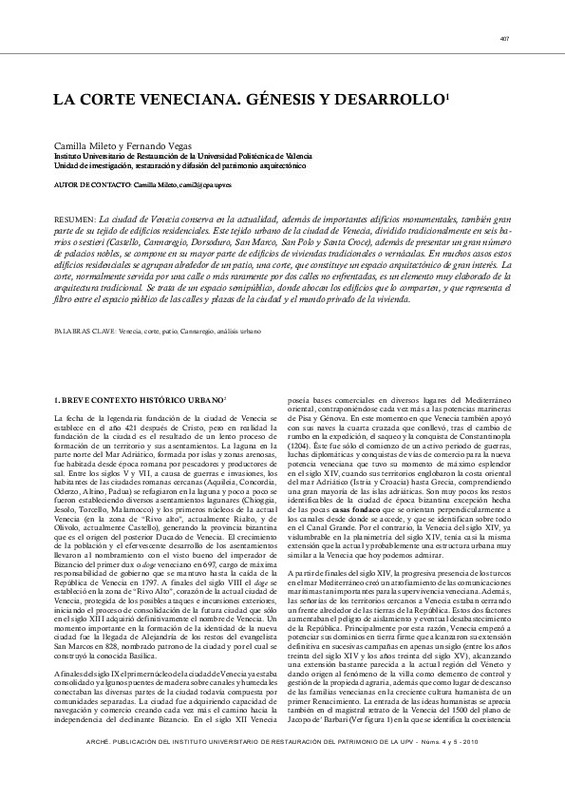JavaScript is disabled for your browser. Some features of this site may not work without it.
Buscar en RiuNet
Listar
Mi cuenta
Estadísticas
Ayuda RiuNet
Admin. UPV
La Corte Veneciana. Génesis y desarrollo
Mostrar el registro completo del ítem
Mileto, C.; Vegas López-Manzanares, F. (2010). La Corte Veneciana. Génesis y desarrollo. Arché. (4-5):407-416. http://hdl.handle.net/10251/31173
Por favor, use este identificador para citar o enlazar este ítem: http://hdl.handle.net/10251/31173
Ficheros en el ítem
Metadatos del ítem
| Título: | La Corte Veneciana. Génesis y desarrollo | |
| Otro titulo: |
|
|
| Autor: | ||
| Entidad UPV: |
|
|
| Fecha difusión: |
|
|
| Resumen: |
La ciudad de Venecia conserva en la actualidad, además de importantes edificios monumentales, también gran parte de su tejido de edificios residenciales. Este tejido urbano de la ciudad de Venecia, dividido tradicionalmente ...[+]
The city of Venice preserves nowadays not only important monumental buildings, but a great part of the historical tissue of its common residential buildings. This tissue has been traditionally divided in six quarters or ...[+]
|
|
| Palabras clave: |
|
|
| Derechos de uso: | Reserva de todos los derechos | |
| Fuente: |
|
|
| Editorial: |
|
|
| Tipo: |
|







